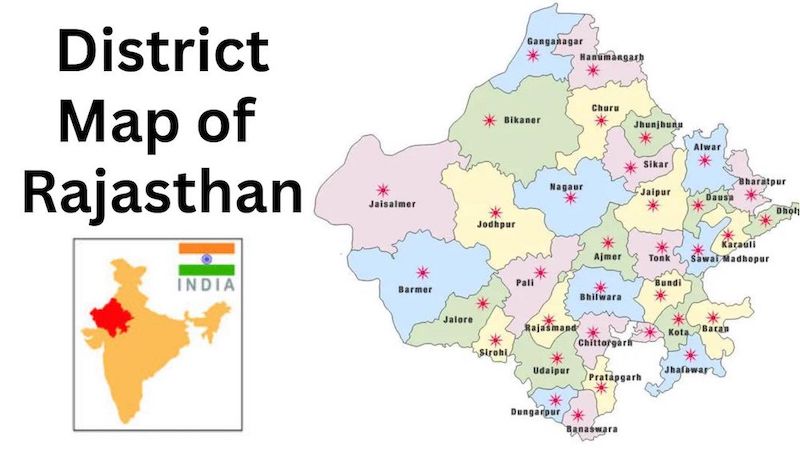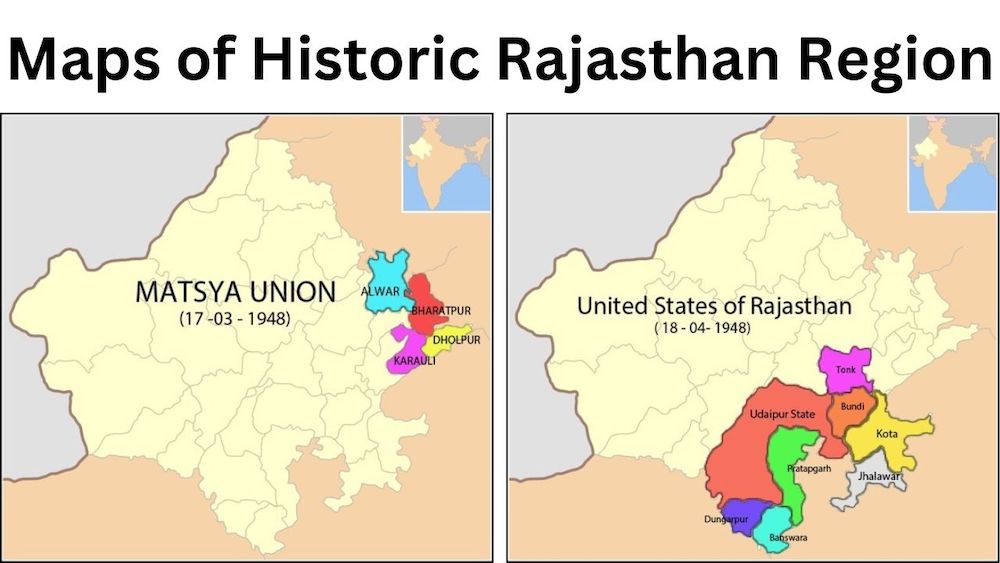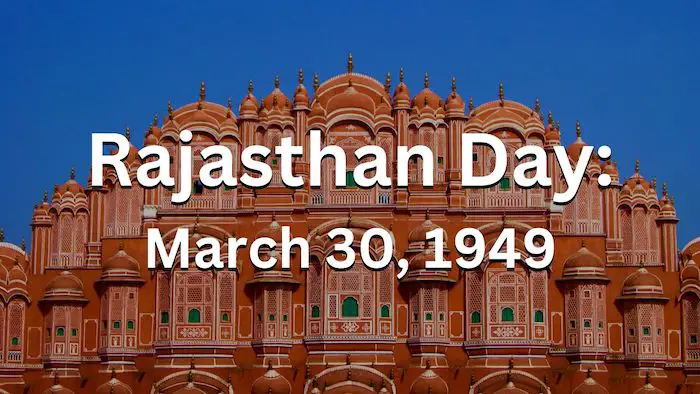Rajasthan, the largest state in India, was earlier known as Rajputana before its inauguration and recognition on March 30, 1949. Now every year, the state celebrates its recognition during the Rajasthan Day festival.
As one of the most popular festivals in Jaipur and Rajasthan, citizens throughout the state celebrate Foundation Day. To explore the celebration and delve into the rich history of Rajasthan, let’s take a closer look at this historic occasion.
The History of Rajasthan Day:
Every year on March 30, Rajasthan Day is observed throughout the region to commemorate the establishment of the area as a unified state. On this significant day in 1949, the states of Jodhpur, Jaipur, Bikaner, and Jaisalmer merged to form the United State of Rajasthan, which eventually became known as Greater Rajasthan.
Previously known as Rajputana, Rajasthan derived its name from the combination of two words: “Rajput” meaning “The Country of the Rajputs” and “Sthan” meaning “The Abode”. Situated in the northwestern part of India, Rajasthan is a land brimming with cultural diversity. The region boasts remarkable attractions such as the remnants of the Indus Valley Civilization, awe-inspiring temples, and majestic forts and fortresses scattered throughout its cities.
Rajasthan is geographically divided into nine distinct regions, each with its unique heritage and artistic contributions. These regions include Ajmer State, Hadoti, Dhundhar, Gorwar, Shekhawati, Mewar, Marwar, Vagad, and Mewat, all equally rich in their cultural legacies.
Why is Rajasthan Day observed on March 30th?
March 30, 1949 marked a significant milestone in the formation of the state, as the name “Rajputana,” adopted by the British Crown, was integrated into the Dominion of India. The capital of the state was declared to be Jaipur, India’s Pink City, which is the largest city in the region.
On this momentous day in 1949, the states of Jodhpur, Jaipur, Bikaner, and Jaisalmer joined forces to establish the United State of Rajasthan, leading to the birth of Greater Rajasthan.

The formation of Rajasthan from 1948 to 1956 can be summarized in the following seven stages:
| Name of Group | States Under Control | Date of Integration |
|---|---|---|
| Matsya Union | Alwar, Bharatpur, Dholpur, Karauli | March 17, 1948 |
| Rajasthan Union | Banswara, Bundi, Dungerpur, Jhalawar, Kishangarh, Kota, Pratapgarh, Shahpura, Tonk. | March 25, 1948 |
| United State of Rajasthan | Udaipur also joined with the other Union of Rajasthan. | April 18, 1948 |
| Greater Rajasthan | Bikaner, Jaipur, Jaisalmer & Jodhpur also joined with the United State of Rajasthan. | March 30, 1949 |
| United State of Greater Rajasthan | Matsya Union also merged with Greater Rajasthan | May 15, 1949 |
| United Rajasthan | 18 States of United Rajasthan merged with Princely State Sirohi except for Abu and Delwara. | January 26, 1950 |
| Reorganised Rajasthan | Under the State Reorganisation Act, 1956 the erstwhile part ‘C’ State of Ajmer, Abu Road Taluka, the former part of princely State Sirohi which was merged in former Bombay, State and Sunel Tappa region of the former Madhya Bharat merged with Rajasthan and Sironj subdistrict of Jhalawar district was transferred to Madhya Pradesh. | November 01, 1956 |
How is Foundation Day Celebrated?
Rajasthan Diwas celebrations (Rajasthan’s Foundation Day) encompass a tapestry of cultural events, parades, and exhibitions that serve as a splendid showcase of the state’s art, craft, music, and dance. During this festive occasion, government offices and schools close their doors, allowing people from diverse communities to harmoniously unite in celebrating the abundant cultural heritage of the state.
Furthermore, the state government uses this auspicious day to highlight its noteworthy accomplishments across various sectors, including agriculture, industry, education, and tourism. To facilitate dialogue and foster development, the government organizes a myriad of events such as seminars, conferences, and workshops throughout Rajasthan.
On Rajasthan Day, individuals adorn their homes and workplaces with vibrant decorations and illuminate the surroundings with the warm glow of diyas, commemorating the foundation of the state. The celebrations culminate in a magnificent fireworks display, painting the night sky with resplendent hues, symbolizing Rajasthan’s cherished unity in its diverse glory.
Facts about Rajasthan’s Foundation Day:
Below are interesting facts about Rajasthan Day in India. From information about how the state was founded, who founded it, and about the different regions and states that were included in Rajasthan during its foundation in 1949.
- Sardar Vallabhbhai Patel announced the merger of princely states (Jaipur, Bikaner, Jodhpur, Jaisalmer) in principle during a public meeting in Udaipur on 14 January 1949.
- Greater Rajasthan was inaugurated by Sardar Vallabhbhai Patel on 30 March 1949 in Jaipur, leading to the annual celebration of Rajasthan Day on March 30.
- Rajasthan was previously known as ‘Rajputana,’ a name attributed to George Thomas in 1800 AD and later popularized by Colonel James Tod.
- At the time of independence, Rajasthan had a total of 22 princely states, with kings ruling in 19 states and chiefships in three states (Neemrana, Luv, and Kushalgarh). Ajmer-Merwara province was under British rule.
- The merger process of the princely states took place from March 18, 1948 to November 1, 1956, following a seven-step procedure.
- On November 1, 1956, the Government of India merged the British-ruled Ajmer-Merwara province with Rajasthan based on the recommendation of the States Reorganization Commission led by Afzal Ali.
- During the merger process, the village Sunel Tappa in Mandsaur tehsil of Madhya Pradesh became a part of Rajasthan, while the village Sironj in Jhalawar district of Rajasthan was included in Madhya Pradesh.
- On September 7, 1949, Jaipur was designated as the capital of the state of Rajasthan based on the recommendations of the Rao Committee appointed by the Government of India.
Famous Rajasthan Day Messages:
Below are some of the most famous and well known Rajasthan Day messages to share with your friends and family from the Land of Kings.
- “Today is the day full of pride for every Rajasthani. Let us celebrate the rich history and inspiring stories of Rajasthan.”
- “Let’s strive towards working for a progressive and prosperous state of Rajasthan.”
- “Rajasthan Day marks the formation of a state after the unification of all the princely states. Let’s embrace and celebrate the decision.”
- “Celebrate Rajasthani Day by wearing the traditional Rajasthani dress and eating the traditional Rajasthani food. Happy Rajasthan Day.”
- “The colors of life, the colors of royalty, the colors of happiness make Rajasthan what it is. Happy Rajasthan Day to all.”
How did Rajasthan get its name?
The name “Rajasthan” translates to “Land of Kings” in English. This is because the region has a long history of powerful and wealthy rulers, many of whom were Rajputs – a Hindu warrior caste. The Rajputs controlled much of the region for centuries, and their legacy can still be seen in the many palaces, forts, and other historic sites that dot the landscape. The first Rajput state was founded in the 8th century, and over time, many smaller states were united under the Rajputs to form the Rajputana. Rajasthan was officially formed as an Indian state in 1949, when the Rajputana was merged with several other princely states.
History of the Greater Rajasthan Region:
Additionally, the term “Rajasthan” was initially introduced by Col. James Tod in his renowned work Annals & Antiquities of Rajasthan, where he referred to it as “Rajas’han.” Following India’s independence, the term came to be officially used to denote the state of Rajasthan. However, the geographical boundaries of Rajasthan underwent several changes until 1956.
Rajasthan’s historical roots extend approximately 5,000 years into the past, encompassing three distinct periods: Ancient, Medieval, and Modern.
Let’s take a look at each of the historic time periods of the state, and how they gave rise to Rajasthan’s Foundation Day.

1. Ancient Period of Rajasthan, up to 1200 AD:
Around 700 AD, the Rajput clans emerged and exerted their influence over various regions of Rajasthan. Prior to this era, Rajasthan was a part of several republics and had been under the rule of the Mauryan Empire. Notable republics that held sway in the area included the Malavas, Arjunyas, Yaudhyas, Kushans, Saka Satraps, Guptas, and Hunas.
The ascendance of Rajput clans in Indian history occurred between the eighth and twelfth centuries AD. During the period of 750-1000 AD, the Pratiharas ruled over northern India, including Rajasthan. Rajasthan also witnessed power struggles between 1000 and 1250 AD involving the Chalukyas, Parmars, and Chauhans vying for supremacy.
2. Medieval Period, 1201–1707:
Around 1200 AD, a portion of Rajasthan fell under the rule of Muslim dynasties. Nagaur and Ajmer emerged as significant centers of their power, with Ranthambore also coming under their control. During the early 13th century AD, Mewar stood as the preeminent and influential state in Rajasthan.
3. Modern Period, 1707–1947:
Rajasthan has a historical reputation of never being politically united under the rule of the Mughal emperor Akbar, although it was he who created the unified province of Rajasthan. Following Akbar’s reign, the decline of Mughal power commenced around 1707, leading to the disintegration of the empire. This dismemberment was a key factor behind the political fragmentation of Rajasthan.
Subsequent to the decline of the Mughal empire, the Marathas made inroads into Rajasthan. They seized control of Ajmer in 1755. Additionally, the 19th century began with the onslaught of the Pindaris, posing further challenges to the region.
Celebrating Rajasthan Day:
Rajasthan Day stands as a significant celebration for Rajasthanis throughout the state. The formation of the state, serves as a powerful reminder of the rich cultural heritage and historical significance that Rajasthan holds.
The day not only pays homage to the valorous Rajput rulers and their contributions but also highlights the vibrant traditions, arts, and customs that have flourished in the region for centuries. Rajasthan Day symbolizes the unity and pride of the people of Rajasthan, fostering a sense of belonging and an appreciation for the remarkable diversity that India encompasses. As this special day is celebrated each year, on March 30th, it serves as a reminder of the past, a celebration of the present, and an inspiration for the future of this remarkable state!
FAQs: Celebrating Foundation Day
Below are some of the most frequently asked questions regarding Rajasthan’s Foundation Day.
Rajasthan Day is observed on March 30th as It was on this date in 1949 that the state of Rajasthan came into existence. At that time, the British Crown merged Rajputana, as it was known, into the Dominion of India.
Consequently, Jaipur, as the largest city, was designated as the capital of the newly formed state. This significant event marked the birth of Rajasthan and laid the foundation for its journey as a distinct entity within the Indian nation.
Rajasthan Day is celebrated on March 30 every year, marking the state’s foundation in 1949. As of 2023, Rajasthan is 74 years old.
The old name of Rajasthan was Rajputana. Rajputana was the name under the British, “land of the Rajputs”, and the Maharaja of Mewar (Udaipur) was the acknowledged head of their 36 states. When India became independent, 23 princely states were consolidated to form the State of Rajasthan, “home of rajas”.
